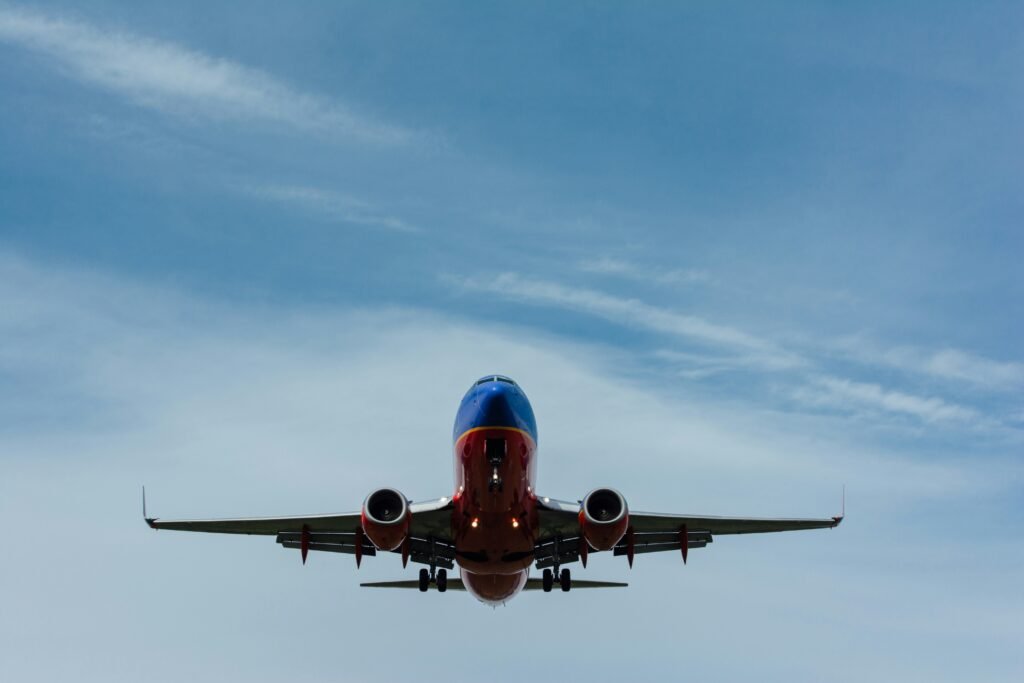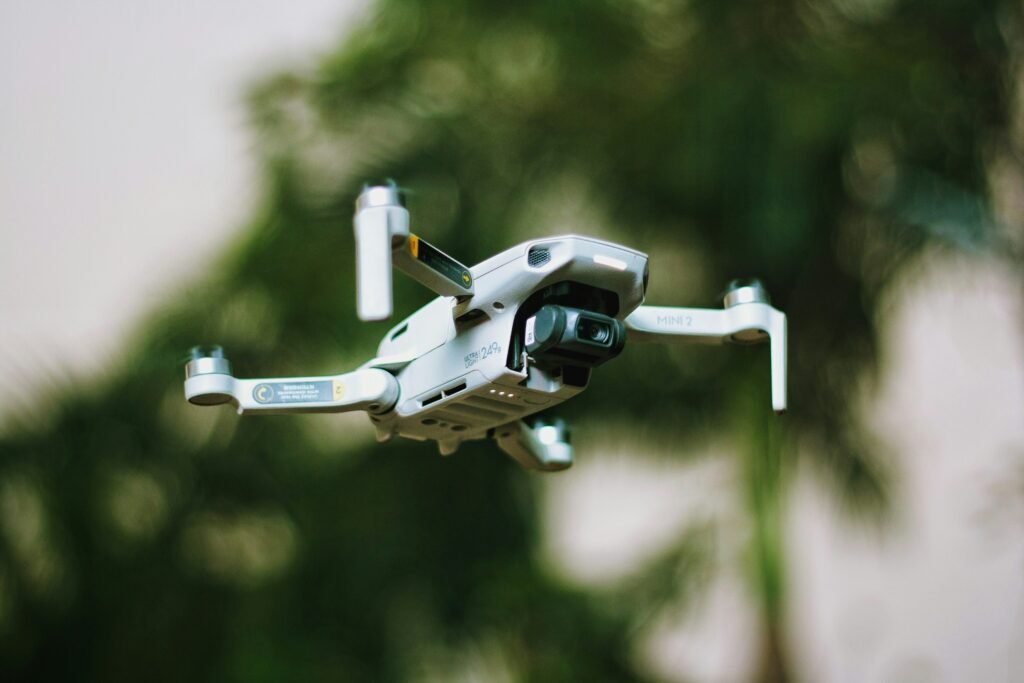
Introduction to Speed in Aviation
Speed in aviation holds a paramount significance, influencing various aspects of air travel, including efficiency, convenience, and overall passenger experience. As the demand for faster travel continues to rise in an increasingly interconnected world, the aviation industry has made substantial strides in designing aircraft that prioritize speed without compromising safety. The importance of speed is not merely about arriving at a destination more quickly; it also considerably enhances the convenience for passengers. When airlines can offer reduced travel times, they attract more customers who are eager to optimize their time and streamline their travel plans.
The evolution of commercial aircraft design has consistently focused on enhancing speed capabilities. From the dawn of aviation, where aircraft could barely reach speeds comparable to that of a car, to today’s technologically advanced airliners that cruise at incredible velocities, the progress made in aerodynamics, materials technology, and propulsion systems has been remarkable. Innovations such as jet engines and advanced composite materials have paved the way for planes to achieve higher speeds while ensuring efficient fuel consumption and lower operational costs.
This focus on speed goes hand in hand with ongoing efforts to reduce flight times across the globe. Airlines invest significantly in research and development to create models that are not only faster but also comply with environmental regulations and enhance passenger comfort. As we delve deeper into the discussion surrounding the fastest passenger airplane, it is essential to appreciate how the relentless pursuit of speed has shaped the design and functionality of commercial aviation. By examining past aircraft alongside current advancements, we can gain a clearer understanding of how speed continues to be a driving force in the evolution of flight.
The Current Fastest Passenger Airplane
The title of the fastest passenger airplane currently belongs to the Boeing 747-8, which is widely recognized for its impressive speed and technological advancements. Capable of reaching a maximum speed of approximately Mach 0.855, the 747-8 remains a quintessential model in commercial aviation. This iconic aircraft was introduced to the public in 2012 and has since established itself as a benchmark for speed among passenger airplanes.
In terms of capacity, the Boeing 747-8 can seat upwards of 410 passengers in a typical three-class configuration, with some arrangements accommodating over 524 in a high-density setup. This capability reflects its design as a long-haul aircraft, particularly suitable for intercontinental flights. The spacious cabin not only enhances passenger comfort but also plays a crucial role in airline operations, allowing for competitive ticket pricing across various routes.
The aircraft’s flight range is equally impressive, with the Boeing 747-8 boasting a maximum operational range of approximately 7,730 nautical miles (14,320 kilometers), enabling airlines to connect distant cities without the need for refueling. The innovative technology integrated into the 747-8 includes advanced wing designs and highly efficient engines, specifically the GEnx-2B67 engines, which minimize fuel consumption while maximizing performance. This combination of speed, range, and capacity has solidified its position as a favorite for travelers and airlines alike.
Furthermore, the aerodynamic enhancements incorporated into its design reduce drag, allowing the aircraft to operate efficiently at high speeds. Innovations in materials and structural engineering also contribute to its high performance, making it a marvel of modern aviation technology. The Boeing 747-8 not only symbolizes speed but also represents the culmination of decades of advancements in aerospace engineering.
Historical Context of Fast Passenger Aircraft
The evolution of passenger aircraft has been marked by significant milestones that reflect advancements in technology and engineering. Early flight in the 20th century introduced the idea of commercial aviation, with aircraft such as the Ford Trimotor and the Douglas DC-3 paving the way for future passenger travel. These early models, while not particularly speedy, emphasized the importance of safety and reliability in flight.
With the onset of the jet age in the 1950s, the speed of commercial aircraft saw dramatic increases. The de Havilland Comet, introduced in 1952, was the first jetliner to carry passengers, indicating a shift towards faster travel. However, it was the Boeing 707, launched in 1958, that revolutionized international travel by significantly reducing flight times across continents. The 707’s combination of speed and capacity allowed airlines to transport larger numbers of passengers at greater speeds, establishing it as a standard in commercial flight.
The next leap in speed came with the introduction of the Concorde in the 1970s. Capable of flying at over twice the speed of sound, Concorde represented the pinnacle of passenger jet technology, allowing for transatlantic travel in under four hours. Despite its remarkable capabilities, the Concorde was retired in 2003, largely due to high operational costs and environmental concerns, which initiated a re-evaluation of the future of supersonic travel.
In recent years, advancements in aerodynamics, materials, and propulsion have reignited interest in fast passenger aircraft. Companies are now exploring new designs that can potentially reach supersonic speeds while emphasizing sustainability. The development of the Boom Overture and similar projects signifies the industry’s commitment to achieving faster and more efficient travel, leading us closer to the next generation of passenger aircraft capable of extraordinary speeds.
Technological Innovations Behind Speed
The remarkable speeds achieved by modern passenger airplanes can be attributed to a range of technological innovations that have evolved over the years. At the forefront of these advancements is aerodynamic design, which plays a crucial role in enhancing the efficiency and performance of an aircraft. The shape of an airplane, from its fuselage to its wings, is meticulously engineered to minimize drag and optimize lift. For instance, the use of supercritical airfoils, which are designed to delay the onset of shock waves, allows aircraft to maintain high speeds while improving fuel efficiency.
Another key factor in achieving high-speed travel is the development of advanced jet engines. Newer engines, such as turbofans, are designed with high bypass ratios, allowing for greater thrust while consuming less fuel. Innovations such as variable fan blade angles enable engines to maintain optimal performance across different stages of flight. Furthermore, engine materials have undergone significant improvements, with the introduction of lightweight and heat-resistant composites that enhance durability and efficiency. These advancements directly impact the aircraft’s ability to reach and sustain higher speeds.
In addition to aerodynamics and engine technology, the materials used in aircraft construction have also seen significant progress. The shift towards lightweight materials such as carbon-fiber-reinforced polymers has contributed to both speed and efficiency. These materials, combined with traditional aluminum alloys, create a structure that is strong yet significantly lighter, allowing for better performance during flight. Such innovations not only enhance speed but also improve maneuverability and reduce overall operational costs.
Collectively, these technological innovations in aerodynamics, engine design, and materials science form the backbone of the capabilities seen in the fastest passenger airplanes. As we look to the future, it is clear that ongoing research and development in these areas will continue to push the boundaries of what is possible in passenger air travel.
Notable Competitors in Speed
In the increasingly competitive realm of commercial aviation, several notable aircraft have emerged as fast contenders alongside the current fastest passenger airplane. One prominent example is the Boeing 787 Dreamliner, which boasts a maximum cruise speed of approximately Mach 0.85. This aircraft is well-regarded for its fuel efficiency and passenger comfort, making it a popular choice for long-haul flights.
Another noteworthy competitor is the Airbus A350, which similarly achieves a top speed of around Mach 0.85. The A350 features advanced aerodynamics and lightweight materials, contributing to its efficient performance and reduced carbon emissions. The airplane’s bi-level design provides ample space and enhances the overall passenger experience, further establishing its reputation as a formidable player in modern commercial aviation.
The Concorde, though no longer in service, deserves mention for its record-breaking speed. Capable of reaching over Mach 2.0, it pioneered supersonic travel, allowing passengers to cross the Atlantic Ocean in under four hours. While it represented a leap in aviation technology during its operational years, the Concorde’s high operational costs ultimately led to its retirement, highlighting the complexities within commercial aviation speed advancements.
Moreover, the Boeing 777-200LR stands out as one of the fastest subsonic jets in airline service today, boasting a maximum speed close to Mach 0.87. Its long-range capabilities paired with impressive speed have made it a favorite for airlines seeking to optimize their route efficiency.
Overall, while the fastest passenger airplane holds an impressive record, the advancements in speed and technology showcased by its notable competitors underscore the dynamic nature of commercial aviation. Continuous innovations in aerodynamics, materials, and engineering are fostering an environment where speed remains a vital aspect of passenger airline offerings.
The Impact of Speed on Passengers and Airlines
Speed in aviation has a profound effect on both passengers and the operational dynamics of airlines. The introduction of faster passenger airplanes allows air travel times to be significantly reduced. For instance, a direct flight that once took several hours can now be accomplished in a fraction of that time, enhancing the overall travel experience for passengers who favor efficiency. This time-saving aspect can play a crucial role for business travelers, whose schedules often demand prompt arrivals at their destinations. Consequently, airlines that offer faster services may attract a larger clientele seeking time-sensitive travel options, thereby improving their profitability.
However, the drive for increased speed does not come without its drawbacks. The technology required for developing faster aircraft often demands substantial investment in research and development. These costs can ultimately be passed down to consumers in the form of higher ticket prices. Additionally, operating faster airplanes may involve greater maintenance expenses due to the engineering complexities associated with advanced propulsion systems and aerodynamics. Consequently, while speed can elevate the appeal of an airline, it also brings financial challenges that airlines must navigate to remain competitive.
Another vital consideration is the environmental impact of high-speed travel. Faster aircraft typically consume more fuel, which can lead to higher carbon emissions per passenger mile. This contradicts the increasing pressure on airlines to adopt sustainable practices and reduce their environmental footprint. By focusing on speed, airlines may risk alienating environmentally conscious travelers who prioritize sustainability over quick travel times. Therefore, the implications of speed in aviation are multifaceted, impacting not only the operational aspects of airlines but also influencing passenger preferences and societal attitudes toward air travel.
Future of Speed in Commercial Aviation
The future of speed in commercial aviation is poised for significant evolution, driven by remarkable advancements in technology, shifting consumer demand, and regulatory frameworks. Emerging technologies such as electric propulsion, hybrid engines, and advanced aerodynamics are currently being explored to optimize fuel efficiency while maintaining and potentially enhancing speed. These innovations are not only crucial for improving the environmental impact of air travel but also hold the key to increasing aircraft performance.
One of the most exciting prospects on the horizon is the revival of supersonic travel, which could change the dynamics of long-distance flights. Following the retirement of the Concorde, recent developments by various aerospace companies are aiming to create new supersonic passenger airplanes. These designs promise to reach speeds exceeding the speed of sound, drastically reducing travel time for long-haul routes. However, the feasibility of such developments hinges on the resolution of challenges related to sonic booms, which traditionally have limited supersonic flight over land.
Moreover, advancements in materials science are contributing to the evolving landscape of passenger airplane design. Lightweight, durable materials facilitate the construction of faster and more efficient aircraft. Alongside this, the integration of artificial intelligence and machine learning technologies is expected to enhance flight operations and route optimization, further increasing overall efficiency and speed for airlines.
Regulatory frameworks will play a pivotal role in shaping the future of speed in commercial aviation. Authorities will need to carefully balance safety, environmental concerns, and economic viability when approving novel technologies and operational practices. Collaborations between governments, aviation authorities, and private companies will be essential to establish the guidelines that will govern the next generation of speed in air travel.
Challenges of Speed in Aviation
In the pursuit of faster passenger airplanes, manufacturers and airlines encounter a multitude of challenges that complicate the realization of high-speed travel. One primary concern is economic viability. Developing advanced technology for faster aircraft requires enormous investments in research and development. Manufacturers must ensure that the innovation results in an affordable product that airlines can operate efficiently. The economic model must be robust enough to cover the costs associated with cutting-edge designs while offering competitive ticket pricing for consumers.
Regulatory compliance further complicates the landscape of aviation speed. Regulatory bodies, such as the Federal Aviation Administration (FAA) and the European Union Aviation Safety Agency (EASA), impose stringent guidelines to ensure the safety of passengers and crew. New speed capabilities necessitate thorough testing and certification processes, which can lengthen the timeline for bringing new aircraft models to market. These regulations are crucial, as they impact design specifications and require safety enhancements that may slow down or impede the speed objectives of manufacturers.
Safety considerations also play a vital role in aviation speed. High-speed flight introduces unique challenges, including issues related to structural integrity, aerodynamics, and passenger comfort. Aircraft must withstand increased forces during takeoff, cruising, and landing, which demands innovative engineering solutions. Moreover, ensuring passenger safety during turbulence or emergency scenarios becomes increasingly complex with faster speeds. The balance between speed and safety is essential, as any compromise could lead to catastrophic consequences.
Lastly, environmental concerns need to be addressed in the quest for speed. High-speed aircraft typically consume more fuel, resulting in greater carbon emissions, which conflict with global efforts to reduce aviation’s environmental footprint. Manufacturers must develop sustainable technologies that allow for speed without compromising environmental goals. This entails investing in alternative fuels, enhancing engine efficiency, and minimizing noise pollution, all of which can impact the overall feasibility of high-speed passenger aviation.
Conclusion: The Importance of Speed in Air Travel
In reviewing the advancements in air travel, it becomes evident that speed is not merely a metric of convenience, but a transformative aspect of the aviation industry. The evolution of passenger airplanes, from the initial propeller-driven models to the latest supersonic jets, illustrates humanity’s relentless pursuit of faster travel. The ongoing development of aircraft designed to exceed current speed benchmarks signifies that the quest for speed continues to drive innovation.
As we consider the competitive landscape of commercial aviation, airlines are constantly in a race to reduce travel times while maximizing efficiency. This not only meets the demands of modern travelers who prioritize time savings but also has implications for global connectivity and business. Faster airplanes enhance economic opportunities, allowing individuals and companies to engage in more frequent and spontaneous travel, fostering international relationships and cultural exchanges.
The technological advancements that contribute to increased speed in aviation are equally noteworthy. Materials science, aerodynamics, and engineering innovations have played pivotal roles in making high-speed travel safer and more feasible. As we look to the future, the potential for supersonic travel, enabled by emerging technologies, could redefine air travel as we know it. This hints at an era where long-haul flights may become shorter and even more accessible, reshaping how passengers experience air travel.
Ultimately, speed remains a fundamental element that shapes the passenger experience. It influences airline competition, traveler preferences, and the overall evolution of air travel. As technological advancements continue to unfold, the implications of these changes on our travel experiences warrant careful consideration, paving the way for a future where speed not only optimizes air travel but also enhances our interconnected world.


